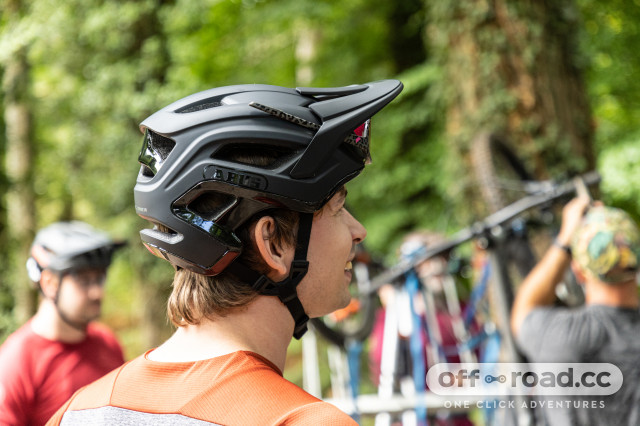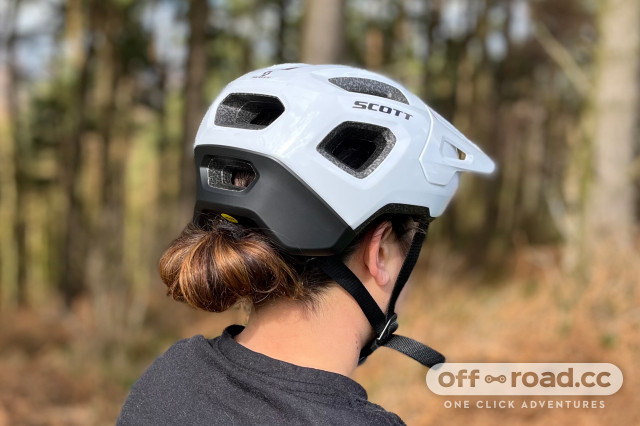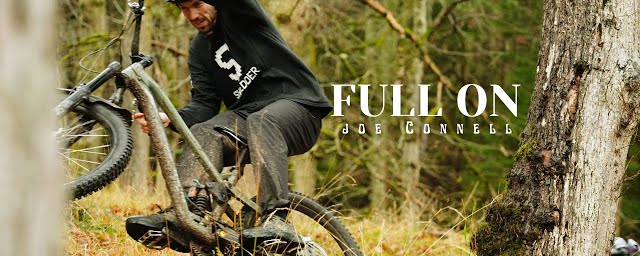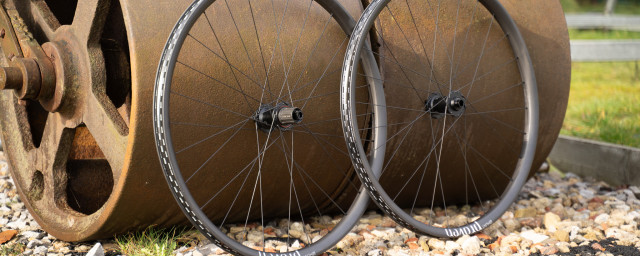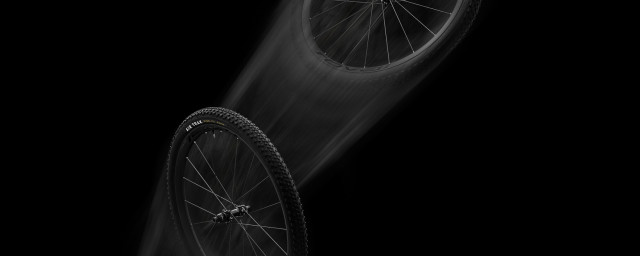Best mountain bike helmets 2025 - top-rated head protection for the trail
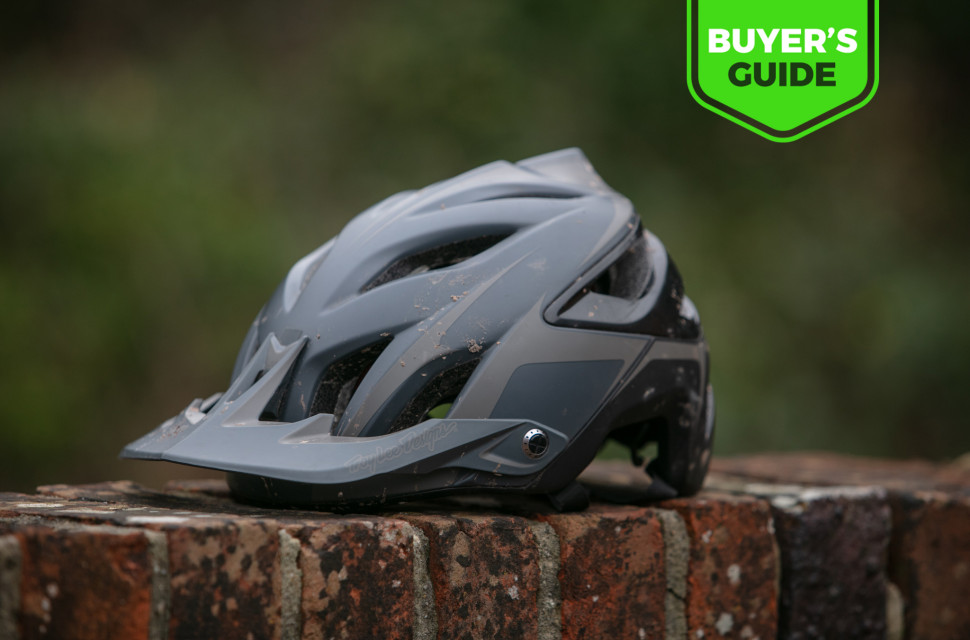
It almost goes without saying that if you ride off-road, it’s an extremely good idea to wear a helmet. Whatever genre of riding you enjoy, the odd crash is pretty much par for the course and without a lid to protect your head and its precious contents, your trail riding career (along with your actual career) could well end up being a short one.
Best mountain bike helmets for trail riding
- Fox Crossframe
- Giant Roost
- Endura MT500 Mips
- Endura Hummvee Plus Mips
- Lazer Coyote KinetiCore
- Poc Kortal Race Mips
- Troy Lee Designs Flowline SE
- ABUS Moventor 2.0 Mips
- ABUS Cliffhanger MIPS helmet
- Specialized Camber helmet
- Scott Argo Plus helmet
- Troy Lee Designs A3 MIPS helmet
- Specialized Tactic 4 helmet
- Fox Dropframe Pro
- Giro Tyrant Spherical
Fox Crossframe
£185
An all-new entry for Fox is the Crossframe. It's a helmet that's built to suit the rigours of cross-country and gravel riding that dons all of the features and the looks including a Mips system and a Boa dial for fit adjustment. There's a Fidlock buckle too as well as an integrated glasses holder.
Our Matt liked the Crossframe for its comfort, the variety of colours available, and how it can hold onto eyewear when not worn. He also found it to be super versatile. Downsides are few but Matt found it not to be quite as breathable as some other XC focussed lids and it's a little pricy.
For all of the details, here's the Fox Crossframe helmet review.
Giant Roost
£90
With the Roost, Giant has made a long-awaited return to the helmet market, having given it a refresh, modernising it to today's trails. With that, it gets a Mips liner and a rounder head form than before. It uses a ratchet system for adjustment and there's a three-position peak.
Our tester found the Roost to be super comfortable while encouraging decent airflow. There may be a little too much excess strap but this is one well-equipped helmet for the money.
Find more details in our Giant Roost helmet review.
Endura MT500 Mips
The Enduro MT500 Mips benefits from an EPS foam as found on nearly every helmet on the market but as well as a Mips cradle, it features Koroyd from the brow almost to the back. On top of that, there's a goggle gripper at the rear and it's sorted with space for glasses' arms. There's also an action camera mount included in the box.
With its array of fit adjustment gubbins, our tester found that dialling in the perfect fit was quick and easy. The Koroyd material also works well to expel heat and the additional Mips liner didn't do a lot to keep heat in. The MT500 Mips is a well-built helmet with fuller coverage and it's comfortable enough for big days out on the bike.
To learn more about this helmet, take a look at the Endura MT500 Mips helmet review.
Endura Hummvee Plus Mips
£65
At £65, we reckon that the Endura Hummvee Plus Mips represents undeniable value for money. For such cash, it grants a Mips liner that'll up protection by reducing forces transmitted to the head during rotational impacts and its EPS conforms to CE and CPSC standards. Thirteen vents encourage good airflow and it provides both vertical and circumferential adjustment.
Our tester found that sizing was excellent, and despite its minimal padding, it's a comfortable hat. It manages sweat well while providing good coverage and its built quality is top-level, especially for the money.
For more information, make sure you read the Endura Hummvee Plus Mips helmet review.
Lazer Coyote KinetiCore
£80
Even though it boasts a five-star Virginia Tech rating, the Lazer Coyote KinetiCore surprised us. It's crammed full of cool tech usually found on helmets well above its price, such as a Fidlock buckle and it gets Lazer's KinetiCore tech combined with a TurnSys vertical and circumferential adjustment.
Thanks to KinetiCore, the Lazer Coyote provides serious breathability and although there's some exposed EPS, it exhibits awesome build quality for the money. Aside from the fiddly strap dividers, this helmet will please riders new and old thanks to great comfort and the aforementioned points.
Check out why we liked this helmet so much in our Lazer Coyote KinetiCore helmet review.
POC Kortal Race Mips
£220
The POC Kortal Race Mips is about as feature-rich as it gets. Making up its long list of features are NFC and RECCO technologies, and special aramid bridges, a Mips liner and a 360-degree fit system. On top of that, there's a Fidlock buckle and the helmet's shaped to work well with the brand's Ora goggles.
While the helmet can transmit a user's vital information via NFC, and can be located using a RECCO detector, these technologies aren't widely adopted in the UK, so that comes as a bit of a downside. But that aside, the POC Kortal Race Mips makes up elsewhere because it covers a lot of the head and comfort is very good. Its ventilation is awesome too, so much so that it can get a bit cold.
To take a deeper dive into this helmet, read our POC Kortal Race Mips review.
Troy Lee Designs Flowline SE
£140
The Troy Lee Designs Flowline SE brings more of the tech and good stuff we liked about the A3 to a more accessible price point. It's built with a three-position visor, Mips B-Series and a full 360-degree fit retention system. There are 14 vents for big airflow, a full wrap in-mould construction and it gets extended coverage towards the rear.
Troy Lee Designs is renowned for making some of the most comfortable helmets on the market and the Flowline SE lives up to expectations. However, against some of the warmer lids the brand offers, it ups airflow, making for a cooler helmet on those warm rides. If we were to nitpick, the built quality isn't quite on par with the A2 it takes over from, but everything else is top-notch.
Check out the Troy Lee Designs Flowline SE helmet review for more on why we rated it so highly.
ABUS Moventor 2.0 Mips
£130
The Moventor 2.0 from ABUS is a helmet built to straddle the line between trail and cross-country riding. Although it may not be as breathable as others, and the Trivider strap adjustment can be a pain, we found the Moventor 2.0 to be a top-quality helmet that looks great and is mega comfortable.
Its ventilation does work as long as you're moving and it balances its comfort with good protection provided by its EPS multishell design, and its Mips cradle. This helmet can also fit ABUS's QUINN technology, which is a good crash-detection sensor that can be plugged in. Of course, that's an optional extra should you be willing to spend the extra cash.
For more details, make sure you give the ABUS Moventor 2.0 Mips helmet review a read.
ABUS Cliffhanger MIPS helmet
£180
Abus has shaken up its mountain bike helmet range, bringing some of the brand’s road helmet success to the party. The Abus Cliffhanger appears to tick all the right boxes and is a worthy consideration for anyone looking to find one of the best mountain bike helmets. The Cliffhanger is a half-shell lid with an impressive feature list and well-considered design cues. This helmet uses Multi-Shell In-Mould construction, Abus has kitted it with the Zoom Ace MTB adjustment system to adjust the height and circumference.
The coverage that the Cliffhanger offers is spot on, too. The rear portion stretches down behind the ear and the temples are well protected. These little temple drops are cut away internally too, to make enough room for even the widest of riding spectacles.
If you like what you see with the Abus Cliffhanger MIPS helmet, read the full review.
Specialized Camber helmet
£70
Pinching the name from the brand’s budget-friendly full susser, the Specialized Camber is the entry-level lid in the brand’s recently completed helmet range. Designed to suit a range of heads thanks to an impressive range of sizes from XS to XL. The Camber brings a raft of trickle-down features from the brand’s spendier lids, to a very welcoming price point.
If you’re looking for a quality helmet on a budget, the Specialized Camber fits the bill. It’s comfortable, reasonably well-ventilated, and it looks rather slick. There's very little to complain about for the asking price. It offers value for money, a high-quality build, decent comfort and MIPS, though it is missing an adjustable visor.
Read the full, in-depth review of the bargain-priced, feature-rich Specialized Camber helmet.
Scott Argo Plus
£90
The Scott Argo Plus is a trail-inspired helmet decorated with impressive features in one lightweight shell. The extended head coverage and large vents offer plenty of airflow, while MIPS safety technology ensures you'll be safe on the steeper slopes.
The dial at the back brings the internal fit system closer to your head and the side straps can be adjusted underneath the ears, and the central buckle isn't bulky or fiddly.
Even though the helmet is extremely lightweight, its shell offers extended coverage at the back and combined with Mips technology increases confidence in the steep and technical sections. The Scott Argo Plus is a lightweight shell with excellent ventilation for trail riding to cross-country loops. It offers extended protection on par with an enduro-style lid, and it's ideal for trail centres to local forest laps.
Read our review of the Scott Argo Plus helmet to learn more about how it performed during testing.
Troy Lee Designs A3 MIPS helmet
£220
Troy Lee's helmet range has been a staple in the mountain biking world since the A1 blasted into the market in 2013. Hailed as one of the most stylish lids you can buy, the A3 is no different. However, it builds massively upon its older sibling with a healthy line-up of super-useable features. It gets a co-moulded EPP and EPS foam specially designed to deal with slow and high-speed impacts. There's also a B-Series MIPS rotational impact protection system that creates a 360-degree fit and a boost in safety. Then, there are 16 vents with channelling built into the foam's interior, a Fidlock magnetic buckle, and TLD's Sweat Glide System.
There's an awful lot to like about the Troy Lee Designs A3. It retains the brand's reputation as the King of Cool and it's outstandingly comfortable. Each feature on the hat is super useful too, justifying the hefty price tag.
If you're interested in the many features of the Troy Lee Designs A3 helmet, read our comprehensive test report.
Specialized Tactic 4 helmet
£100
Specialized has redesigned the Tactic for its fourth iteration and has been developed with e-bikers, enduro riders, and hard-chargers in mind. As such, it's been built with a bunch of features with extra coverage at the rear to keep them happy and well-protected.
Features include Specialized Integrated Fit System designed to accommodate different head shapes. There's an occipital base adjustment to further personalize the fit, internal channelling to guide air over the head along with 4D brow cooling that provides a gap to draw air through the front, and the helmet uses MIPS Evolve with ANGI readiness, NTA 8776 certification and scoring the highest 5-Star Virginia Tech Rating.
For the full round-up and performance details of the Specialized Tactic 4 helmet, read our detailed write-up.
Fox Dropframe Pro helmet
£260
Redesigned for 2024, Fox's Dropframe Pro builds on the original by adding more protection and a more modern look. It gets all of the features you could expect, including Mips and a dual-density Varizorb EPS. There's a Fidlock closure as well as a Boa fit system. It's then compatible with glasses and goggles, and there's a removable GoPro mount.
In use, it's one of the better 3/4 helmets we've tried. It promotes an excellent level of airflow, and a range of pad sizes is included in the box to dial in the fit to your head. Although the comfort is superb, it could do with more room for ears.
For more on this helmet, check out the Fox Dropframe Pro helmet review.
Giro Tyrant Spherical Dirt Helmet
£150
The Giro Tyrant Spherical Dirt fills the middle ground between a full-face and a half-face mountain bike helmet. While it's inevitably heavier than a standard open-face lid, it offers a great deal of protection from the very low rear and its 'spherical Mips' liner.
It offers excellent coverage around the skull due to that 'full cut', far more than a regular open face does, which Giro says 'further enhances its protective capability.' As the shell extends to cover the ears, there's more coverage at the temples, too, as with a full face lid.
The Giro Tyrant can get a little hot compared to proper half-face lids but it's comfy, but it's great in winter and a particularly good choice for downhill laps on e-bikes, where the weight and heat retention are much smaller problems.
Read our review of the Giro Tyrant Spherical Dirt helmet to learn more about how it performed during thorough testing.
Best convertible and full-face mountain bike helmets for enduro riding
- Bluegrass Vanguard Core
- MET Parachute MCR
- Lazer Cage Kineticore
- Fox Proframe RS
- Leatt MTB 4.0 Enduro V21 convertible helmet
- Giro switchblade MIPS helmet
- Specialized Gambit
- IXS Trigger FF
- 100% Trajecta
- Troy Lee Designs Stage
Bluegrass Vanguard Core
£295
The Vanguard Core is Bluegrass's enduro-specific full-face helmet that's designed to blend lightweight and airflow with top levels of protection. It certifies to ASTM F1952 and NTA 8776 and gets a five-star rating from Virginia Tech. Achieving such standards doesn't come easy and the Vanguard Core does so through the employment of a Mips C2 liner, a 360-degree head belt for fit adjustment and an in-mould polycarbonate shell with an EPS liner.
Rustling up ventilation is 24 vents with a breathable chin guard and a removable mudguard. We liked this helmet for its top levels of protection in a lighter weight and super breathable package. But you'll have to have deep pockets for the Mips version.
Here's the Bluegrass Vanguard Core review for a deeper look.
MET Parachute MCR
£300
The 'MCR' that's tagged onto the end of the MET Parachute's name stands for 'Magnetic Chinbar Release' and, with that, this helmet does exactly what it says on the tin. Staking its claim as one of the best convertible helmets on the market, this lid employs Fidlock's magnetic tech to make removing and reattaching its chin-bar a doddle.
It comes into its own in its ability to function as both a full-face and an open-face helmet. In the former, it's comfortable, stable and breathable, and in the latter, while weighty, it's a force to be reckoned with. If you were to buy one helmet to suit all kinds of riding, we thoroughly recommend this one.
To see what all the rage is about, have a gander at the MET Parachute MCR convertible helmet review.
Lazer Cage KinetiCore
£250
The Lazer Cage KinetiCore brings the brand's cool KinetiCore tech to a lightweight full-face helmet. It's proven to be comfortable and KinetiCore provides excellent airflow and a rotational impact reduction element. The chinbar ups breathability, too, and the whole helmet tips the scale at 820g.
It's well priced, too, while posing as an excellent offering in the lightweight enduro-style full-face helmet. Although Lazer can be overlooked at times in the mountain bike space, this helmet is well worth consideration for its ability to perform.
Check out the Lazer Cage KinetiCore full face helmet review for more information.
Fox Proframe RS
£320
With the Proframe RS, Fox took what it learned from the original Proframe and built upon it, creating a lightweight full-face helmet that ticks all the boxes any good enduro-focussed helmet should. It's expensive and its cheek pads can fall out when removing the helmet but, in terms of outright performance, this helmet is a belter.
This RS built of the Proframe ushers in a Fidlock closure and an external Boa adjustment dial. It also utilises Mips Integra Split which combines an EPP with an EPS foam with another moving layer. This both ups protection but allows the designers to build in unobstructed ventilation and speaking of which, airflow is stellar. Both the ventilation and work to the helmet's fit make it one comfortable contender, and one that's more than capable of being worn all day long.
To learn more about this helmet, make sure you read the Fox Proframe RS full-face helmet review.
Leatt MTB 4.0 Enduro V21 convertible helmet
£278
The MTB 4.0 Enduro V21 is the first convertible lid in Leatt’s strong helmet line-up. It comes packed with handy features, and the chin bar is easy to wrangle once you get the hang of it.
Other than the obvious removable chin bar, you get an lot of cool tech with the MTB 4.0 Enduro V21. Naturally, there’s Leatt’s own 360-degree Turbine rotational impact reduction system but there’s also a Fidlock enclosure, a sunglasses dock, in-moulded EPS and EPP foam, and a moisture-wicking anti-odour liner.
Along with all that, there’s a three-position adjustable visor with a breakaway function to further reduce the risks of rotational impacts and a removable fly-net/mouthpiece in the chin bar. It also wears 18 vents. The Leatt MTB 4.0 Enduro is certified to full ASTM DH standards and also comes with a nice bag and a pair of soft cheek pads.
Read the complete review of the Leatt MTB 4.0 Enduro V21 convertible helmet.
Giro Switchblade MIPS MTB Helmet
£275
The Switchblade is designed for enduro racing and technical descents, built to offer the ultimate protection combined with the removable chin piece to allow more airflow when you need it. It is certified to the following standards: CPSC, EN-1078 and ASTM-1952-DH with and without the chin bar, the lid is tested at higher impact levels than regular lids and needs to offer more coverage to pass this test. It’s also got Mips designed to dissipate rotational forces in crashes.
There are 20 vents in total, but even without the chin bar fitted, it's not as well-ventilated as a regular open-face helmet. That said, it does pretty well considering its purpose.
If you want to learn more about the Giro Switchblade Mips helmet, take a look at the complete review.
Specialized Gambit helmet
£275
The Specialized Gambit is designed to be the lightest DH-certified full-face helmet on the market. As such, Specialized has given it a carbon-fibre shell that’s combined with a polycarbonate backing and five pieces of targeted density foam to keep the weight low.
The Gambit is packed with premium features such as the brand’s Integrated Fit System that’s said to accommodate variations in head shape and occipital base, alongside the Mips SL cradle to minimise rotational impacts.
If you're looking for a super lightweight full-face helmet with DH certification, open-face-like adjustment, and mega airflow, the Gambit firmly fits the bill.
Read the complete review of the Specialized Gambit helmet.
Smith Mainline helmet
£280
The Mainline is Smiths' first entry into the full-face helmet market. While expensive, it can earn its keep – it’s supremely comfortable and fits the bill for an enduro-focused full face almost perfectly. It has both the MIPS and Koroyd rotational-impact protection systems for impressive safety, though the Koroyd does somewhat restrict airflow.
It is pricey but Smith Optics has done an excellent job with the Mainline. It’s thoughtfully ergonomic and super comfortable. The only real downsides are that it would be breezier if the Koroyd wasn’t there – if potentially less protective and that some riders might prefer a Fidlock closure to the classic and more fiddly D-rings.
Read our full review of the Smith Mainline helmet for more information on its features and how it performed during testing.
IXS Trigger FF helmet
£200
The IXS Trigger FF is built using a 'unibody' in-moulded EPS, which fuses everything so there are no weak points or seams. The chin guard is internally braced by the (also fused-in) skeleton that IXS call X-Frame. Keeping the lid secure is the ever-popular Fidlock closure, paired with a flexible open-face style retention system that has three levels of vertical adjustment as well as the usual twisty tightening function.
If you’re looking for full-face protection that’s equally as happy during an enduro as it is on a chilled mooch with your mates, the IXS Trigger FF ticks all the boxes. It’s light and comfortable enough to keep you happy yet well-protected.
Make sure you read our comprehensive review of the IXS Trigger FF helmet for all the details.
100% Trajecta helmet
£230
The 100% Trajecta features a multi-point adjustable visor, and a metal D-ring closure and is certified to downhill full-face standards, despite the 24 large vents that make this considerably more pleasant to pedal in than a regular full-face. It's even got a propriety version of Mips beneath its antimicrobial liner.
Although pricey, the rotational impact protection system is flimsy and it's best for round-shaped heads. If you’re looking for a helmet that offers meaningful protection while staying comfy, light and cool enough for all-day rides, the 100% Trajecta confidently ticks all the boxes.
Our full review of the 100% Trajecta helmet covers all the specifications in detail, so make sure you give it a thorough read.
Troy Lee Designs Stage helmet
£300
Troy Lee Design's Stage helmet is a breezy full-face lid that offers excellent protection and comfort while also looking pretty sharp. It's still not as cool to be in as an open lid on a hot day, but for racing or riding that requires more protection, it's the next best thing, assuming your pockets are deep enough.
The Stage is one of the latest generations of full-face lids designed to be pedalled in, rather than being cut out for full-on gravity madness. That means it's peppered with a lot more ventilation – 25 vents in all.
Overall, it offers a lot of protection, delivers excellent comfort and about as much ventilation as you could ask from a full-face lid.
Read our review of Troy Lee Design's Stage helmet to learn how it scored during testing protocols.
Best full-face mountain bike helmets for downhill riding
ABUS Airdrop Mips
£260
The ABUS Airdrop is an excellent addition to the full-face helmet market as it provides top-level protection in a package that encourages heaps of airflow. It has 11 inlets and six outlets and can be fitted with the ABUS QUIN crash detection technology. The brand has also addressed the hearing loss that comes as part of wearing a full-face helmet and has added two holes placed above the ears – and there's material cut from the foam to provide room for the ears internally.
Although we recommend sizing up if you're in between sizes, the Airdrop works fantastically, offering a level of airflow that's rare to find on a DH-focussed helmet and packing in the comfort without feeling claustrophobic. The Mips can get creaky, but this is a great helmet.
Here's the ABUS Airdrop Mips full-face helmet review if you want to learn more about what makes it tick..
Bell Full-10 Spherical
£580
The Bell Full-10 Spherical is one of the most expensive helmets on the market. However, for the investment, you're getting a lot of protective features, so while the outlay is high, you're paying for top protection. Matching its premium price is a carbon fibre shell that sheds some weight but importantly, there's Mips Spherical. This cool tech combines EPS and EPP foam that can move independently of each other. Pairing the two foams addresses impacts at slow and high speeds.
This is one of the most comfortable full-face helmets we've tested and it's built to an incredibly high quality too. Its magnetic cheek pads are easy to remove and reattach as and when. Airflow might not be the greatest but as a 100% gravity-focused helmet, a breeze starts to make its way through its T.E.A.S system at speed.
If you've got a bit of cash and would like to know more about one of the best full-face helmets around, check out our Bell Full-10 Spherical full-face helmet review.
Bell Sanction 2 DLX
£180
With the Sanction 2 DLX, Bell boldly claims to redefine the lightweight bike park helmet but we found that it packs tonnes of versatility for a rather accessible price. It's breathable and comfortable and it looks great.
The Sanction 2 DLX features some tech that's been trickled down from the Full-10, coming sorted with a Mips liner, granted not the mega-Mips of Spherical. It also comes sorted with an anti-microbial comfort liner. The Sanction 2 DLX left us impressed as it offers a lot for a reasonable price.
See why we liked it so much in our Bell Sanction 2 DLX full-face helmet review.
How to choose the best mountain bike helmet
When it comes to mountain biking, head protection is a mandatory requirement. The best mountain bike helmets are now lighter and cooler and are designed to meet the demands of each mountain biking genre. Ultimately, the type of helmet will be determined by how frequently you intend to push your riding limits while riding off-road trails. The more technical the trails the more protection and the more pedalling uphill the greater the need for the best venting performance.
Fortunately, these days, we’re spoilt for choice when it comes to effective, good-looking helmets to suit almost every budget. Helmets are packed with advanced technology features that offer better safety, comfort and durability the more you spend, but you can get a well-appointed lid around the £50 price mark.
While pricier models tend to have additional safety features, on a basic level all helmets work in the same way. A hard, thin (usually plastic) moulded outer shell serves to spread the force of an impact as broadly as it can. This force is then absorbed by a softer and much thicker inner layer (usually expanded polystyrene – aka EPS), which hopefully results in as little of the impact as possible being transmitted to your head.
We recommend that you try before you buy, as there is no point in having a helmet packed with technology and modern safety features if it doesn't fit your head properly.
What type of helmet do I need for mountain biking?
The type of helmet you buy, whether it's half-shell or full-face, can largely be determined by your riding discipline. Cross-country mountain biking helmets are often similar to road cycling designs as they share the highest design priority of the best ventilation, this will allow riders to push themselves to their physical limit without the risk of overheating. This means less coverage and bigger vents. The shell focuses its protection on the area of the head above the ears and will usually not have a peak.
For helmets best suited for mountain bike trail riding you can expect an increased level of head coverage when compared to a cross-country helmet - particularly to the rear to protect the base of your skull - plus an adjustable peak, smaller vents and a noticeable increase in weight. A good balance of protection, weight and venting makes trail helmets solid all-around performers. The phrase ‘trail’ is a fairly big catchall that can cover anything from gnarly cross-country to light enduro, so there’s a wide spectrum of trail helmets available as a result.
Enduro helmets take head protection to the next level when compared to trail or all-mountain cousins. If you are riding or racing more extreme trails often associated with the enduro scene you will want an increase in head protection amongst other body armour. Enduro trails are often ridden blind, with little or no chance to assess trail obstacles before hitting them at pace. An increase in coverage will result in slightly more weight and less airflow than trail cross-country models but you can expect more confidence when riding in the bigger mountains with technical trails. On certain models, you will also find additional features such as ear protection and on-helmet goggle parking. Convertible designs with removable chin bars or fixed chin bars with large vents to aid breathing are now common in this category.
The best full-face MTB helmets are designed to offer the highest level of protection for downhill mountain biking. Technical disciplines often result in you taking risks at speed to find the smallest fraction of time-saving and warrant the most head protection. Taking cues from motorcycle helmet designs, the modern full-face MTB lids have wide openings, goggle compatibility and certified levels of protection. Like downhill bikes, these helmets are not made for pedalling uphill, so expect minimal venting and comparatively hefty weight, they also have a fixed chin-bar and are designed for use with goggles.
Price is often a major factor when choosing a new helmet. Entry-level helmets (£30 to £60) tend to have a smaller area of outer shell protecting the inner layer, less adjustment to the helmet’s fit and are bulkier overall. Mid-priced models (£60 to £120) have a higher quality, larger shell to better protect you and the helmet from damage, decent levels of fit adjustment on one or more planes and a more compact shape. Pricier helmets (upwards of £120) usually come with extra safety features such as MIPS (see our jargon buster below) and reinforced internal construction, multi-plane fit adjustment via a quality retention device and are as lightweight as possible. Getting a proper fit is crucial when choosing a new helmet, so always try before you buy.
As a minimum, ensure the helmet you choose conforms to a European safety standard - denoted by BSEN, followed by a number (usually found on a sticker inside the helmet). Also keep an eye out for helmets passed with a Snell Foundation B90 rating, as this is a superior standard again.
Is Mips worth it?
What even is Mips? Well, it stands for Multi-directional Impact Protection System. A Mips-equipped helmet has an additional internal low-friction slip-plate which can help reduce the rotational forces that occur in certain impacts being transmitted to your brain. This is a type of spherical helmet technology that is licensed to an ever-increasing number of brands and is featured in premium helmets for every discipline of cycling.
Trek's in-house apparel brand uses a honeycomb design called WaveCel and Leatt has developed and adopted its own 360 Turbine system. Each system works similarly to the Mips design. It's difficult to ascertain whether any system is better than the next; however spherical helmet technologies are trickling down to cheaper models so they are now available to more riders boosting head protection safety.
How should a mountain bike helmet fit?
While a helmet might feature a dozen impressively advanced features, if it doesn't fit you correctly you run the risk that it will move in a crash and not provide the level of protection that it has been intended to give. A helmet's fit should be secure and comfortable without any pressure points. Most modern helmets feature adjustable cradle or retention systems to easily tweak the size of the band that holds the helmet on your head. There are often adjustable foam inserts to tailor the fit around your head. It doesn't end there; thin straps with multiple adjustments to improve the fit and rider comfort.
We can't stress enough that the most important thing is to get one that fits you properly and is comfortable. All manufacturers provide a size guide on their website but it often doesn't account for the shape of your head and hair. We recommend that you head to your local bike shop to try on several different helmets from different brands. There are differences in shapes between manufacturers and some shapes will fit some heads more comfortably and without trying it's impossible to know which will suit you.
Does an MTB helmet need a peak?
Also known as a visor. A peak helps keep the sun out of your eyes. Ideally, it should be adjustable enough so that it doesn't impede your field of view while doing so. Many trail and enduro lids also give enough clearance to allow goggles to be stowed under the peak when not in use. Many helmet peaks have been designed to fold back or detach in a crash to reduce the risk of neck injuries if the peak digs into the ground.
If you have seen or are considering buying a helmet design that is missing a peak it is most likely been intended for road and XC use. These genres tend to prioritise ventilation and the lightest weight possible and a peak is one way to save a few grams so choose to do without one.
How often should I replace my mountain bike helmet?
An effort to regularly clean and inspect for any damage to the helmet in any area including the strap, shell, liner or foam is always highly recommended.
The frequency with which your helmet should be replaced will depend on usage. How often you use it will make a huge difference to its wear, both visibly and hidden; the more the helmet is used, the more it will deteriorate.
Even with no impacts, there is a constant knocking and pressing of the EPS as the helmet is stored, dropped and placed on hard surfaces. These continual tiny impacts over time may reduce efficacy, and the EPS will gradually lose its volume making it less able to deal with the energy in the unfortunate event of a significant impact.
So there is no one rule that works work here, but as a guide, some brands advise that you replace your helmet every three years even if it has suffered from no visible damage from a crash or not. Over time, things such as solvents, chemicals even from hair products and cosmetics as well as environmental exposure can all contribute to degrading the performance of the helmet. As head protection technology is constantly evolving, it is wise to consider a replacement helmet to ensure your vitals are protected by the latest features, technology and ever-improving designs.
If your helmet has been involved in any form of a crash it must be replaced in order for it to do its job and dissipate the energy from an impact and potentially save your life the next time it is called upon.
If any exposed EPS, the strap or liner is starting to look chipped or worn. If the polycarbonate shell shows dents and if a single small piece from even the edge of the helmet is missing then it should not be used and must be replaced. There may be hidden damage to the construction of the helmet. Look inside the vents for any cracks or splitting in the EPS. Also if the polycarbonate shell is separating from the EPS that means it's time to change, too.
Many helmet manufacturers offer discounted crash replacement schemes so it makes good sense to err on the side of caution when it comes to something as important as head protection.
Is ventilation important?
If you are pushing your limits, smashing pedals on your way up a climb, you will understandably start to get hot and perspire. Ventilation within a helmet is designed to draw cool air into your head, pass around your head and cool you before forcing the warmer air trapped out the back through a series of exhaust vents. Naturally, some helmets offer better ventilation than others, so it comes down to personal preference and the mountain bike riding you prefer.












